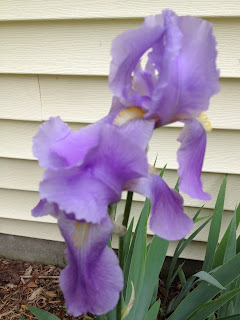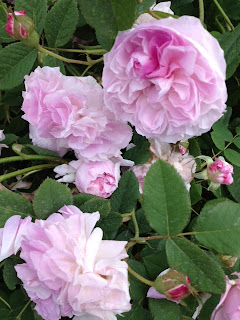A reworking of my Civil War Sunday Post of Father's Day, 2011.
Have you ever thought about Civil War figures as fathers? Enough of them were. And, fatherhood was and was not like being a father today.
1. Infant mortality was high, and even if your child made it past
infancy, the father was rare who did not lose at least one child in
childhood or young adulthood.
2. Fathers could forbid their daughters from marrying a prospective
suitor - but then, it didn't always mean the daughter would obey. (and,
obey was the word for that cultural context.) Jefferson Davis faced this
decision with his daughter, Winnie, when she fell in love with a
Yankee, the grandson of an abolitionist. And, just like today,
sometimes parents must watch their children as adults come to tragic
ends.
3. Then as now, many fathers had to be absent from home frequently,
leaving their wives to be both mother and father. (this hasn't changed, sadly, as many spouses hold down the "Home Fort" while spouses serve in the military - both men and women).
4. Many fathers found themselves as single fathers when their wives
died in childbirth. The solution, in many cases, was to marry again as
quickly as possible.
5. Although losing children was a fact of life, it caused great sorrow
to the grieving parents. Sometimes they didn't recover. (One example, Mary Todd
Lincoln, the wife of Abraham Lincoln.) There was not much that could be done in those days
for depression.
The following information is taken in part from
"After The War-The Lies and Images of Major Civil War Figures After the Shooting Stopped" by David Hardin.
Abraham and Mary Lincoln had four sons. Only two outlived their
father. One beloved son, Willie, died while Abraham Lincoln was in the
White House and both Abraham and Mary took the death very hard. (Abraham Lincoln's oldest son Robert Todd Lincoln grew up to be a Secretary of War under President James Garfield, who himself was a Major General on the Union side of the Civil War. R. Todd Lincoln witnessed Garfield's assassination. No, you can't make this stuff up.) Lincoln has no direct descendents alive today (the last one died in 1985) but does have living cousins,
including actor Tom Hanks.
Jefferson Davis and his wife Varina had six children, four boys and two
girls. None of the boys outlived their parents. Jefferson Davis' son
Joseph, died at the age of five in April of 1864 from injuries suffered in a
fall from the Confederate Executive Mansion. Jefferson Davis
does have living descendents.
William Tecumseh Sherman and his wife, Ellen, had four children. As
with Lincoln and Davis, Sherman lost a son, Willie (was this a bad luck
name?) in 1863 at the age of nine. (There is
interesting speculation concerning how this impacted Sherman.) A third son, born in 1864, died at the
age of six months. Still another son, Tom, became a Jesuit priest but
later descended into insanity and died in Louisiana. Quoting from
"After the War": "The son of the despoiler of Georgia lies in the Jesuit
cemetery in Grand Coteau, Louisiana, next to the Jesuit grandnephew of
Alexander Stephens, the Confederacy's vice-president."
And finally, Robert E. Lee. Robert E. Lee and his wife Mary Custis Lee
(George Washington's granddaughter) had seven children. Unlike the
other major figures above, Lee's children all lived into adulthood.
One, Custis Lee (a Major General in the Confederate Army), lived into
his 80's. Lee does have living descendents today (as does his Union counterpart, General U.S. Grant.)
On today, Father's Day, we should all be thankful that modern
medicine spares many modern parents what these people of 150 years ago
had to go through as fathers (and mothers).
If you are interested in the living descendents of various Civil War figures,
this is a good source.

















































